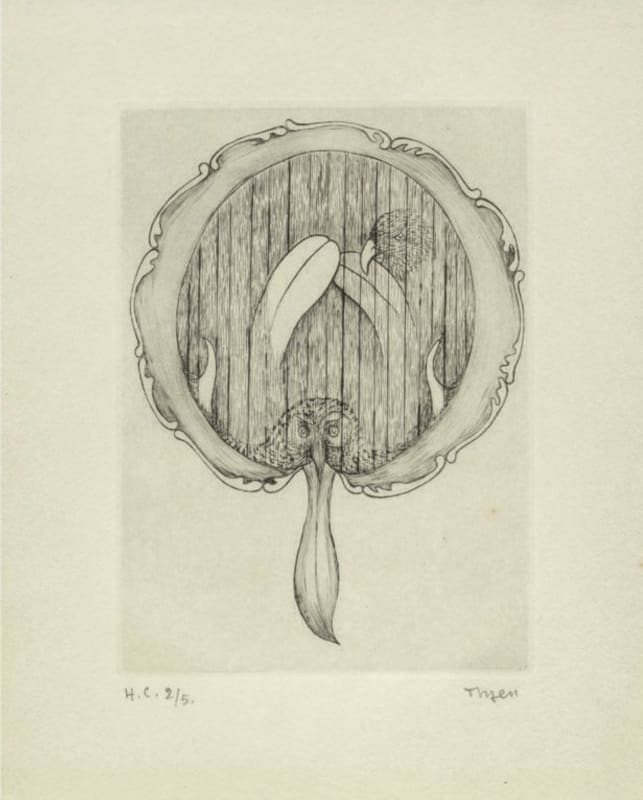“I do not paint what I see. I paint what I imagine.”
(Toyen)
A Surrealist Voice of Rebellion, Eros, and Inner Exile
Toyen — born Marie Čermínová in Prague in 1902 — was a Czech painter, illustrator, and graphic artist whose work embodies a powerful blend of eroticism, dream, resistance, and mystery. Adopting the gender-neutral pseudonym Toyen early in her career, she rejected both conventional artistic categories and traditional gender roles, crafting instead a uniquely personal surrealism that defied easy interpretation.
As a co-founder of the Czech Surrealist group in the 1930s, Toyen was a central figure in the development of Central European surrealism. After the Nazi occupation of Czechoslovakia, she helped shelter the Jewish poet Jindřich Heisler, with whom she later fled to Paris. There, she became closely involved with the French Surrealist circle, including André Breton, Benjamin Péret, and Hans Bellmer.
Toyen's drawings, etchings, and lithographs are among the most compelling and intimate aspects of her oeuvre. Often rendered in fine, whisper-like lines or stark, dreamlike contrasts, her graphic works evoke secret desires, isolated bodies, nocturnal landscapes, and fragile symbols. These works are at once sensual and restrained, political and poetic, rooted in silence, resistance, and transformation.
“My work does not shout. It whispers.”
– Toyen
Her visual language is elusive — sometimes violent, sometimes tender — but always charged with psychological intensity and symbolic depth. In a surrealist world often dominated by male fantasies, Toyen’s art offers a radically different gaze: vulnerable, erotic, opaque, and hauntingly autonomous.
Toyen died in Paris in 1980, largely underrecognized by the broader art world. Today, she is celebrated as one of the most original and uncompromising surrealists of the 20th century — a visionary whose drawings and prints continue to speak across time, between silence and rebellion, between dream and flesh.
